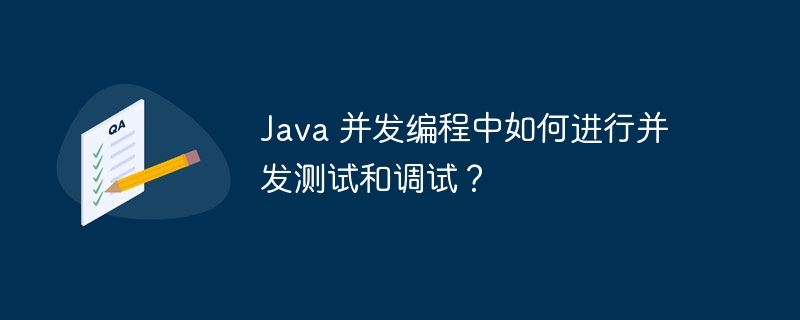Home >Java >javaTutorial >How to conduct concurrency testing and debugging in Java concurrent programming?
How to conduct concurrency testing and debugging in Java concurrent programming?
- 王林Original
- 2024-05-09 09:33:011278browse
Concurrency testing and debugging Java Concurrency testing and debugging in concurrent programming are crucial, the following techniques are available: Concurrency testing: Unit testing: Isolate and test a single concurrent task. Integration testing: testing the interaction between multiple concurrent tasks. Load testing: Evaluate an application's performance and scalability under heavy load. Concurrency Debugging: Breakpoints: Pause thread execution and inspect variables or execute code. Logging: Record thread events and status. Stack trace: Identify the source of the exception. Visualization tools: Monitor thread activity and resource usage.

Concurrency testing and debugging in Java concurrent programming
Concurrency testing and debugging is essential for identifying and solving problems in multi-threaded applications. The question is crucial. This article explores common testing and debugging techniques used in concurrent programming in Java.
Concurrency testing
- Unit testing: Unit testing using separated thread execution allows you to isolate and test individual concurrent tasks.
- Integration testing: Integrate multiple concurrent tasks for testing to detect interaction issues.
- Load testing: Simulates the execution of multiple threads under high load to evaluate application performance and scalability.
Concurrency Debugging
- Breakpoints: Pause thread execution at a specific location to examine variable values or execute code.
- Logging: Add log statements to record thread events and status for easy analysis.
- Stack Trace: Generate a stack trace when an exception occurs to identify the source of the error.
- Visualization tools: Such as JVisualVM, which can be used to monitor thread activity and resource usage.
Practical Case
Consider a web server that handles concurrent requests in multiple threads.
- Unit testing: Test each concurrent task handling a request and assert the expected results.
- Integration testing: Simulate multiple concurrent requests to check the interaction between tasks.
- Load testing: Use JMeter or Apache Benchmark to simulate a large number of concurrent requests under high load.
- Debugging: Use breakpoints and logging to identify errors, and stack traces to trace the source of the exception.
By applying these testing and debugging techniques, you can improve the reliability and performance of your Java concurrent applications.
The above is the detailed content of How to conduct concurrency testing and debugging in Java concurrent programming?. For more information, please follow other related articles on the PHP Chinese website!

